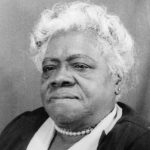
Model Monday: George Washington Carver
George Washington Carver was born in Diamond, Missouri, around 1864. Carver learned to read and write going on to earn his high school diploma from Minneapolis High school in Kansas. He was accepted to Highland College in Kansas, but the offer was rescinded once they learned his skin color. When he couldn’t take any classes, he began to conduct biological experiments and explore geology on his new homestead. He began to study art as well in 1890 at Simpson College in Iowa. He perfected his drawing skills through his sketches of botanical samples. He then enrolled in the Botany program at Iowa State Agriculture College, where he became the first African-American student. He earned a Bachelor of Science degree, and went on to receive a Master’s degree.
He was hired by Booker T. Washington to run the African-American Tuskegee Institute’s agricultural department in 1896. Under his management, the department achieved national merit. Curriculum included the study of methods of crop rotation and the development of alternative cash crops for cotton farmers. He also created the “Jesup Wagon,” which was a type of mobile classroom for farmers. During his time at Tuskegee, he researched plant biology which brought him national recognition. He focused on the potential uses for newer crops such as peanuts, sweet potatoes, soybeans, and pecans. He used these crops to create plastics, paints, dyes, and gasoline. Wanting to support future agriculture research, he created the George Washington Carver Foundation at Tuskegee.
He was greatly respected and admired, earning international attention: President Theodore Roosevelt consulted George on agricultural issues in the United States, he became a member of the British Royal Society of Arts, and he advised Mahatma Gandhi on agriculture and nutrition.
We recognize him as a hero for his many achievements, and his legendary hard work and dedication.




